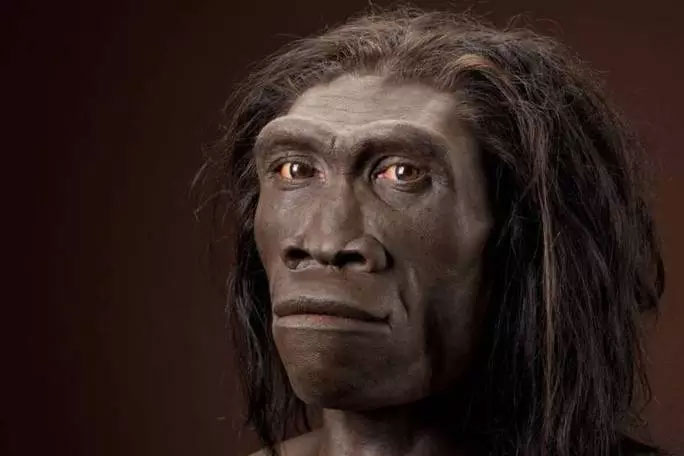According to Sci-News, researchers have recently identified the archaeological site of Fordwich in Northeast Kent, England, as containing remnants of some of the earliest humans to inhabit Southeast England. However, they are not of the same species as us!
The research team, led by the Department of Archaeology at the University of Cambridge, believes that the mysterious individuals who lived here between approximately 620,000 and 560,000 years ago were Homo erectus or Homo heidelbergensis, both of which belong to the oldest group of the genus Homo. They walked upright and had bodies very similar to ours, but their faces still retained many ape-like features.

“Ape-like Human” Homo erectus: Upright but with a face that still bears many traits of ancient apes – (Photo: SMITHSONIAN MAGAZINE)
Both species belong to the genus Homo, just like our species, Homo sapiens, but they appeared much earlier.
Since the 1920s, stone quarrying in the area has revealed around 330 stone fragments identified as ancient tools. The latest survey has uncovered even more valuable items: rare evidence of scraping and piercing tools from this early period.
The stone tools were dated using infrared luminescence dating (IR-RF), indicating they could have been made during the aforementioned timeframe.
“The discovery of these artifacts suggests that ancient humans were crafting raw animal hides, possibly for use in clothing or shelters,” explained Dr. Tomos Proffitt from the Max Planck Institute for Evolutionary Anthropology in Germany, a member of the research team.
Previously, a collection of footprints dating back 840,000 to 950,000 years was found on the other side of England – in Happisburgh and Norfolk.
At the Fordwich site, scientists are still searching and hope to eventually find the remains of the individuals who created the aforementioned stone tools.
The study has just been published in Royal Society Open Science.


















































